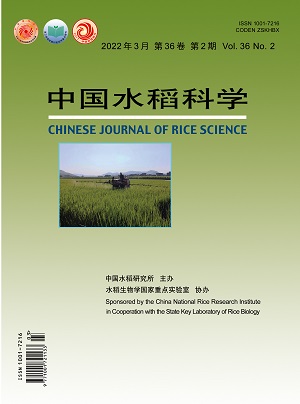【Objective】 The present study aims to evaluate the effect of trinexapac-ethyl spraying on rice lodging resistance,yield and quality performance of good quality rice.【Method】 Good quality rice varieties Toyonishiki and Shennong 09001 were used as test materials to investigate the effects of trinexapac-ethyl at different concentrations(CK, 0 mg/L; C1, 90 mg/L; C2, 180 mg/L; C3, 360 mg/L) during different growth stages(T1, late tillering stage; T2, early jointing stage; T3, booting stage) on lodging resistance, yield and quality of good-quality rice based on lodging index, bending resistance and thrust resistance.【Result】 The morphological and anatomical structure of stem, and the lodging resistance of rice plants were improved by trinexapac-ethyl application. With the increasing application concentration, the plant height decreased, the center of gravity moved down, the length of the first, second and third internodes at the base shortened, the stem diameter and stem wall thickness increased, the number of large and small vascular bundles and the area of large vascular bundles first increased and then decreased, the bending resistance and plant thrust resistance increased, the lodging index decreased and the lodging resistance increased. There were significant differences in lodging resistance among different application periods. Application during booting stage was the most effective to improve lodging resistance. With the increasing application concentration, the number of effective panicles, seed setting rate, grain number per panicle, the panicle length, and the yield significantly decreased, but the 1000-grain weight significantly increased. The grain yield was on a downward slide as the application of trinexapac-ethyl was postponed. The protein content increased with the increase of application concentration, the protein content significantly increased, the taste value of rice, the brown rice rate, and milled rice rate significantly decreased, which had no significant effect on other rice quality traits. Trinexapac-ethyl spraying exerted a declining influence on rice quality and nutritional quality for delayed application, and the rice quality was relatively good.【Conclusion】 With the increasing concentration, the lodging resistance of good quality rice increases. Although the yield, processing quality and nutritional quality decline, they can make up for the loss caused by lodging to a certain extent. Therefore, lodging resistance can be used as a plant growth regulator to improve lodging resistance in the production of good quality rice. The best combination of application concentration and application period was 180 mg/L (1200 L/hm2) during early jointing stage(T2C2).

